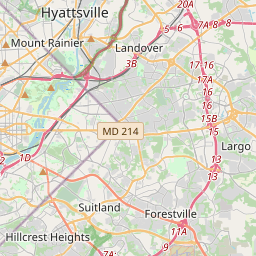Civil War Unknowns Monument
Historical marker location:






April 12, 1861: The Civil War begins with the Confederate attack on Fort Sumter, located in South Carolina's Charleston Harbor.
April 15, 1861: President Abraham Lincoln issues a call for 75,000 volunteers to serve in the Union Army to suppress the rebellion.
May 24, 1861: The first major land battle, known as the First Battle of Bull Run (or First Battle of Manassas), takes place in Virginia. It ends in Confederate victory.
September 17, 1862: The Battle of Antietam in Maryland becomes the bloodiest single-day battle in American history, with heavy casualties on both sides. The Union forces, commanded by General George McClellan, manage to halt Confederate General Robert E. Lee's advance into Union territory.
January 1, 1863: President Lincoln issues the Emancipation Proclamation, declaring that all slaves in Confederate-held territories are to be set free. However, the proclamation does not immediately free all slaves in the United States.
July 1-3, 1863: The Battle of Gettysburg in Pennsylvania takes place, resulting in a significant Union victory and inflicting heavy casualties on Confederate forces. It marks a turning point in the war.
November 19, 1863: President Lincoln delivers the Gettysburg Address, emphasizing the principles of liberty, equality, and the preservation of the Union.
April 9, 1865: General Robert E. Lee surrenders to Union General Ulysses S. Grant at Appomattox Court House in Virginia, effectively ending the Civil War.
April 14, 1865: President Lincoln is assassinated by John Wilkes Booth while attending a play at Ford's Theatre in Washington, D.C.
May 10, 1865: Confederate President Jefferson Davis is captured, signaling the collapse of the Confederate government.
December 6, 1865: The Thirteenth Amendment to the United States Constitution is ratified, officially abolishing slavery throughout the country.
While this timeline provides an overview of key events, it is important to note that the Civil War spanned over four years, from 1861 to 1865, and encompassed numerous battles, campaigns, and political developments that shaped the course of American history.
Virginia was one of the original 13 colonies that declared independence from Great Britain in 1776.
In 1801, the federal government acquired land along the Potomac River to establish the District of Columbia, including what is now Arlington County. However, in 1846, the portion of the land on the Virginia side of the river was retroceded back to Virginia due to political tensions between the southern states and the federal government.
During the American Civil War, Arlington County played a significant role. The area was turned into a military encampment and eventually became the site of Arlington National Cemetery, where Union soldiers were buried. After the war, the land was returned to its original owner, George Washington Custis Lee, the grandson of George Washington. In 1871, the government purchased the land from Lee's family, and the cemetery continued to grow.
In the 20th century, Arlington County experienced rapid suburbanization and urban development. The construction of the Pentagon in the 1940s and the expansion of federal agencies led to an influx of residents and increased economic activity. Today, Arlington County is known for its vibrant communities, bustling urban centers, and close proximity to Washington, D.C. It is also home to numerous landmarks, including the Pentagon, Arlington National Cemetery, and the Marine Corps War Memorial.
Arlington County Timeline
This timeline provides a concise overview of the key events in the history of Arlington County, Virginia.
- 1600: Native American tribes, including the Doeg and Nacotchtank, live in the area now known as Arlington County.
- 1634: English settlers establish a trading post near present-day Rosslyn.
- 1801: The United States purchases the land that will eventually become Arlington County as part of the District of Columbia.
- 1846: The portion of the District of Columbia west of the Potomac River is returned to Virginia due to legislation passed by Congress.
- 1861: The American Civil War begins.
- 1864: Arlington House, belonging to General Robert E. Lee, is seized by the Union Army and becomes the site of Arlington National Cemetery.
- 1920: The name of the county is changed from Alexandria County to Arlington County.
- 1954: Integration of public schools in Arlington County takes place following the Supreme Court's ruling in Brown v. Board of Education.
- 1970s: Arlington County experiences significant growth in population and urban development.
- 2001: The Pentagon is damaged during the September 11 terrorist attacks.